 www.franklinwatts.co.uk This ebook edition published in 2012 Franklin Watts 338 Euston Road London NW1 3BH Franklin Watts Australia Level 17/207 Kent Street Sydney NSW 2000 1998 text Verna Wilkins 1998 illustrations Lynne Willey The right of Verna Wilkins to be identified as the author of this work, has been asserted. The right of Lynne Willey to be identified as the illustrator of this work, has been asserted. ISBN: 978 1 4451 1333 3 A CIP catalogue record for this book is available from the British Library. Series editor: Sarah Peutrill Original series editor: Sarah Ridley Artwork: Lynne Willey (line), Lisa Williams (colour) Consultant: Dr Anne Millard Franklin Watts is a division of Hachette Childrens Books, an Hachette UK company. www.hachette.co.uk
www.franklinwatts.co.uk This ebook edition published in 2012 Franklin Watts 338 Euston Road London NW1 3BH Franklin Watts Australia Level 17/207 Kent Street Sydney NSW 2000 1998 text Verna Wilkins 1998 illustrations Lynne Willey The right of Verna Wilkins to be identified as the author of this work, has been asserted. The right of Lynne Willey to be identified as the illustrator of this work, has been asserted. ISBN: 978 1 4451 1333 3 A CIP catalogue record for this book is available from the British Library. Series editor: Sarah Peutrill Original series editor: Sarah Ridley Artwork: Lynne Willey (line), Lisa Williams (colour) Consultant: Dr Anne Millard Franklin Watts is a division of Hachette Childrens Books, an Hachette UK company. www.hachette.co.uk
Contents
Chapter 1
On a Saturday morning in 1929, Martin Luther King was born in the south of the United States of America.

One day, when he was six, Martin went out to play at his friends house.

One day, when he was six, Martin went out to play at his friends house.
His friends mother looked at him strangely and said to him, You boys are old enough for school now you cant play here any more. Go away. Martin was very upset and ran home.  Why, he asked his mother, cant I play with my friend any more? His mother held him close and explained. Some white people are made to think that they are better than black people.
Why, he asked his mother, cant I play with my friend any more? His mother held him close and explained. Some white people are made to think that they are better than black people.  Martin began to notice signs that read, No Colored Allowed.
Martin began to notice signs that read, No Colored Allowed.  Martin began to notice signs that read, No Colored Allowed.
Martin began to notice signs that read, No Colored Allowed.
Whites only. He learned from his parents that those signs meant that black children had to go to schools that were shabby. They meant that black people could not eat where white people ate. 
 He learned also that black people had to sit at the back of the bus. One day, on a shopping trip, he raced to a lift. It had beautiful shiny buttons he could push.
He learned also that black people had to sit at the back of the bus. One day, on a shopping trip, he raced to a lift. It had beautiful shiny buttons he could push.
Lets use this one, he said to his mother.  Shush, she said to him. This one is not for us. We must use that one. She pointed to an ugly, old lift.
Shush, she said to him. This one is not for us. We must use that one. She pointed to an ugly, old lift. 
Chapter 2
Martins parents sent him to a good school.

Chapter 2
Martins parents sent him to a good school.
He was very clever and finished school three years earlier than was usual. Then he went to university. He made many good friends there and worked hard. He also loved clothes! One summer, he took a holiday job in a northern city, a long way from home. Here there were no signs saying, Whites Only, No Colored. Martin felt happy.
He decided then that he wanted black people to to be treated the same as white people, all over America.  He decided to become a minister when he left university. In church, he would preach for a change in the laws.
He decided to become a minister when he left university. In church, he would preach for a change in the laws.  After he had passed his first degree, Martin went on to study theology. He also thought about ways to change the unfair laws against black people. In 1951, Martin graduated from college with the highest grades in his year.
After he had passed his first degree, Martin went on to study theology. He also thought about ways to change the unfair laws against black people. In 1951, Martin graduated from college with the highest grades in his year.
His parents gave him a brand new car. He was delighted.  Then Martin fell in love with a music student. He married Coretta when he was twenty-four years old.
Then Martin fell in love with a music student. He married Coretta when he was twenty-four years old. 
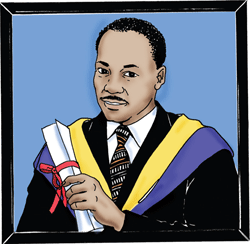 He still continued his studies. In 1955, he was awarded a special degree, called a Doctorate in Theology, and became Dr.
He still continued his studies. In 1955, he was awarded a special degree, called a Doctorate in Theology, and became Dr.
Martin Luther King.
Chapter 3
Now that he had finished his studies, Martin became a minister of a church. As he had planned, he preached and prayed about the unfair laws against black people. He and thousands of others marched against these unequal laws.

Eventually, one law was changed so that black children and white children could go to the same schools. Martin was pleased with this success.
But there was more to be done.  Then, not long afterwards, a woman called Rosa Parks was on her way home from work. She climbed onto a bus and sat down in the black section. When the bus was full, the driver ordered the black people to stand so that the whites could sit down. Rosa Parks refused and the police arrested her.
Then, not long afterwards, a woman called Rosa Parks was on her way home from work. She climbed onto a bus and sat down in the black section. When the bus was full, the driver ordered the black people to stand so that the whites could sit down. Rosa Parks refused and the police arrested her.  Rosa was found guilty and fined, even though she had done nothing wrong.
Rosa was found guilty and fined, even though she had done nothing wrong.
This made many black people angry. Martin saw a chance to organise black people to change this law. So black people refused to use the buses. Some shared cars to get to work, and some walked everywhere. The white people who owned the buses lost lots of money.  Eventually, almost a year later, the law was changed and black people could use the buses in the same way as whites could.
Eventually, almost a year later, the law was changed and black people could use the buses in the same way as whites could.
Still, Martin continued to preach against unequal laws. By 1957, the whole world had begun to take an interest in his work. He led many marches of black people fighting for better rights in America. He was arrested over one hundred times for his part in the marches. 
Next page
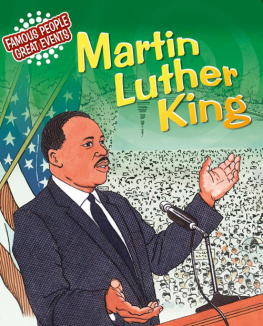
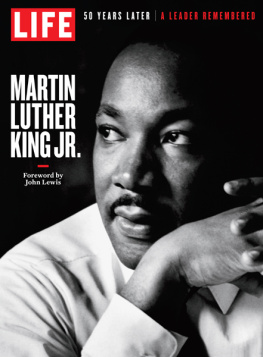
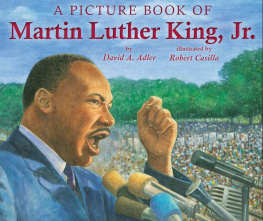
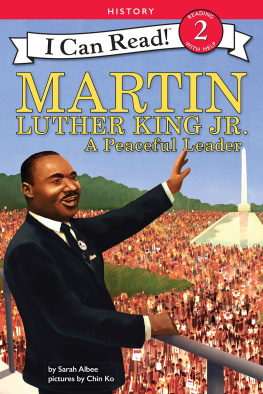


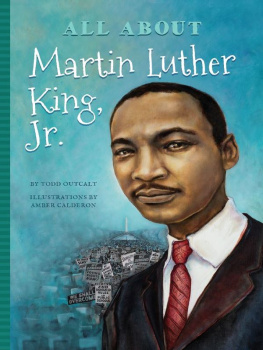
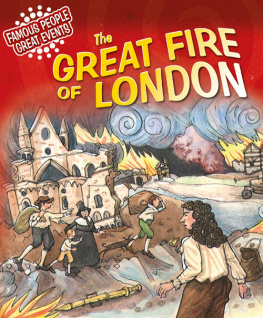
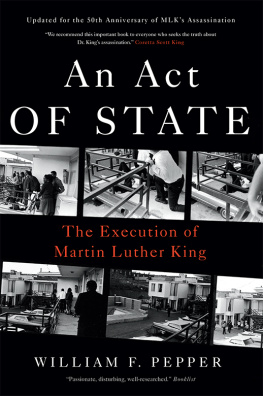
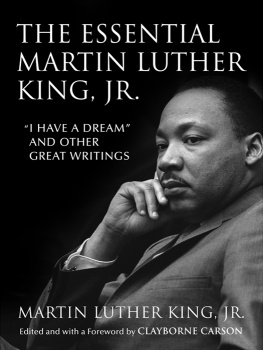

 www.franklinwatts.co.uk This ebook edition published in 2012 Franklin Watts 338 Euston Road London NW1 3BH Franklin Watts Australia Level 17/207 Kent Street Sydney NSW 2000 1998 text Verna Wilkins 1998 illustrations Lynne Willey The right of Verna Wilkins to be identified as the author of this work, has been asserted. The right of Lynne Willey to be identified as the illustrator of this work, has been asserted. ISBN: 978 1 4451 1333 3 A CIP catalogue record for this book is available from the British Library. Series editor: Sarah Peutrill Original series editor: Sarah Ridley Artwork: Lynne Willey (line), Lisa Williams (colour) Consultant: Dr Anne Millard Franklin Watts is a division of Hachette Childrens Books, an Hachette UK company. www.hachette.co.uk
www.franklinwatts.co.uk This ebook edition published in 2012 Franklin Watts 338 Euston Road London NW1 3BH Franklin Watts Australia Level 17/207 Kent Street Sydney NSW 2000 1998 text Verna Wilkins 1998 illustrations Lynne Willey The right of Verna Wilkins to be identified as the author of this work, has been asserted. The right of Lynne Willey to be identified as the illustrator of this work, has been asserted. ISBN: 978 1 4451 1333 3 A CIP catalogue record for this book is available from the British Library. Series editor: Sarah Peutrill Original series editor: Sarah Ridley Artwork: Lynne Willey (line), Lisa Williams (colour) Consultant: Dr Anne Millard Franklin Watts is a division of Hachette Childrens Books, an Hachette UK company. www.hachette.co.uk One day, when he was six, Martin went out to play at his friends house.
One day, when he was six, Martin went out to play at his friends house.  Why, he asked his mother, cant I play with my friend any more? His mother held him close and explained. Some white people are made to think that they are better than black people.
Why, he asked his mother, cant I play with my friend any more? His mother held him close and explained. Some white people are made to think that they are better than black people.  Martin began to notice signs that read, No Colored Allowed.
Martin began to notice signs that read, No Colored Allowed. 
 He learned also that black people had to sit at the back of the bus. One day, on a shopping trip, he raced to a lift. It had beautiful shiny buttons he could push.
He learned also that black people had to sit at the back of the bus. One day, on a shopping trip, he raced to a lift. It had beautiful shiny buttons he could push. Shush, she said to him. This one is not for us. We must use that one. She pointed to an ugly, old lift.
Shush, she said to him. This one is not for us. We must use that one. She pointed to an ugly, old lift. 
 He decided to become a minister when he left university. In church, he would preach for a change in the laws.
He decided to become a minister when he left university. In church, he would preach for a change in the laws.  After he had passed his first degree, Martin went on to study theology. He also thought about ways to change the unfair laws against black people. In 1951, Martin graduated from college with the highest grades in his year.
After he had passed his first degree, Martin went on to study theology. He also thought about ways to change the unfair laws against black people. In 1951, Martin graduated from college with the highest grades in his year. Then Martin fell in love with a music student. He married Coretta when he was twenty-four years old.
Then Martin fell in love with a music student. He married Coretta when he was twenty-four years old. 
 He still continued his studies. In 1955, he was awarded a special degree, called a Doctorate in Theology, and became Dr.
He still continued his studies. In 1955, he was awarded a special degree, called a Doctorate in Theology, and became Dr. Eventually, one law was changed so that black children and white children could go to the same schools. Martin was pleased with this success.
Eventually, one law was changed so that black children and white children could go to the same schools. Martin was pleased with this success.  Then, not long afterwards, a woman called Rosa Parks was on her way home from work. She climbed onto a bus and sat down in the black section. When the bus was full, the driver ordered the black people to stand so that the whites could sit down. Rosa Parks refused and the police arrested her.
Then, not long afterwards, a woman called Rosa Parks was on her way home from work. She climbed onto a bus and sat down in the black section. When the bus was full, the driver ordered the black people to stand so that the whites could sit down. Rosa Parks refused and the police arrested her.  Rosa was found guilty and fined, even though she had done nothing wrong.
Rosa was found guilty and fined, even though she had done nothing wrong. Eventually, almost a year later, the law was changed and black people could use the buses in the same way as whites could.
Eventually, almost a year later, the law was changed and black people could use the buses in the same way as whites could.